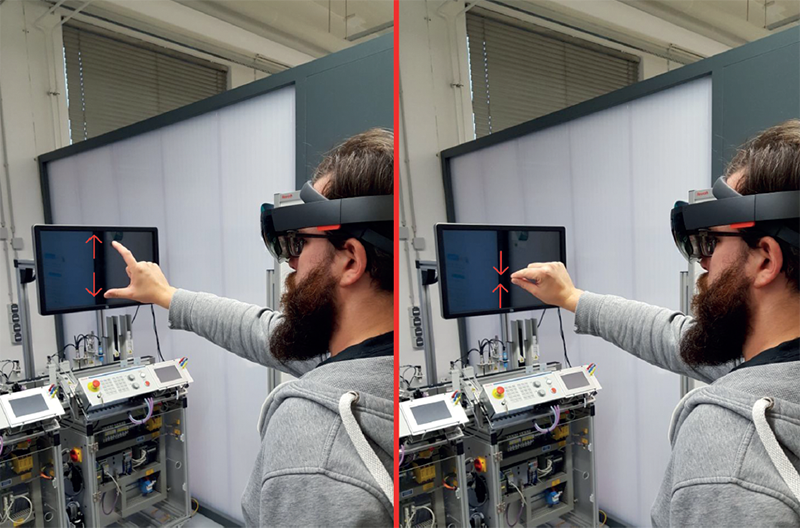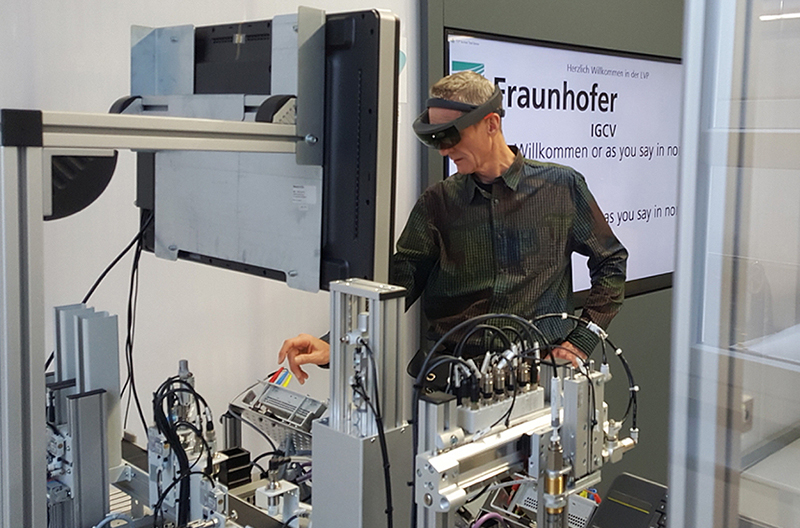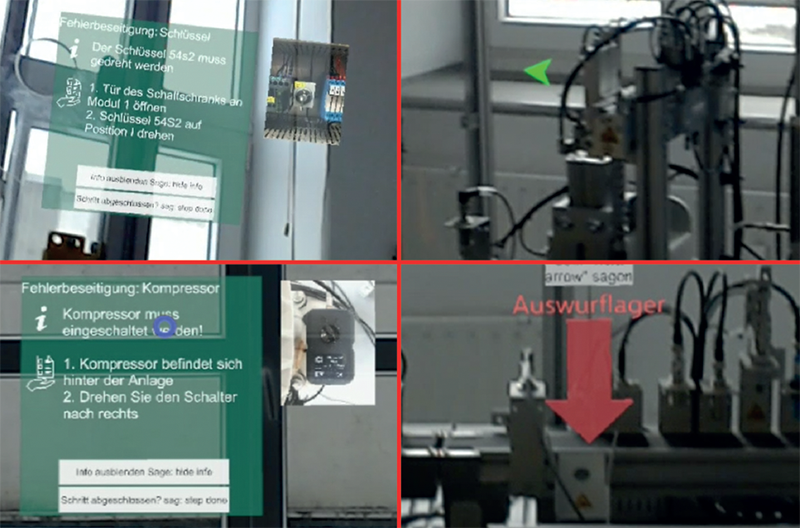Tim Schöls
Master Thesis
2018
Design Guidelines
for Augmented Reality in production
Development of an
AR application for data glasses (Hololens)

This application is intended to help future users to remedy errors in case of failures of an industrial plant.
To realize this assistance system, the project Holographic Maintenance Assistant ("HolMA") was launched within the Fraunhofer Institute IGCV in Augsburg.
To get an exact picture of the target group, primary and secondary personas were defined in the first step.
Subsequently, four hypothesis were formulated and corresponding test scenarios designed. For these tests a special prototype was developed, which was then tested with real subjects.

The first hypothesis related to the control of the app
(speech or gesture).
The second aspect involved the question of
how to display an unknown object on an industrial plant.
The third test addressed the question how the indicators need to be designed to refer to objects outside the field of view.
Following this, the question of information positioning was discussed.
The participants were persons of the primary and secondary target group. Two rounds of testing were conducted and evaluated.
The methods used were Observations and Thinking Aloud. During the development, the focus laid on the approaches User Centered Design and Lean UX.

During the tests, there were no clear preferences for the app control. Rather, it is recommended to equip the system with both variants to give the decision-making power to the user.
On the other hand, it is possible to draw some conclusions regarding the display of unknown objects on an industrial plant.
The pure photographic image could not prevail against the direct AR
reference to an object.
The research also showed that indicators should be colored with positively associated colors, while animation of the indicators is
not necessary.
updated: 01. Aug. 2019
